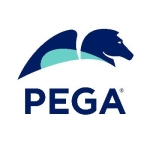What is our primary use case?
We have done a number of different workflow automations and process automations, spanning a large number of different business units. We have created bots with RPA.
We have done a little machine learning and AI work with the solution, but not a ton. I haven't found a lot of use cases for this.
It has delivered pretty good value for RPA and workflow automation, but we haven't gotten as much out of the machine learning, data extraction, and classification stuff.
How has it helped my organization?
The automations that we built are massively important to us. We have seen significant improvements.
Over the past few years since we have built this out, it has permeated the organization. As we go and meet more people, they see what we have done or what we are doing and it has changed the way people think. For example, I have a number of business areas where they will tap us almost constantly, saying, "Hey. I have another good idea for automation." We have business leaders, and even people on the floor who are hands-on, throwing ideas out there and trying to make things even more efficient.
It has definitely helped us improve our accuracy and compliance. We don't use it a ton in the highest risk areas, but we are using it in a financial area and a number of different solutions.
We have some time-sensitive transactions that are very difficult. You either have to hire an army or automate. So, we have automated some of that stuff. For example, if you need a PO change made, then you might not be able to get it all done in a day. If you are doing it manually, then some stuff might get recorded the next day. Whereas, with automation, you don't have that problem anymore. Things are more accurate partly because we don't get errors. We can build validation into our solutions and part of it is more accurate simply because it is more timely.
What is most valuable?
The ability to stitch together distinct pieces of a process into a larger workflow is the most valuable feature. I could emulate grabbing input from a screen, from an application, database, or Excel or a CSV file, then take that information and do a ton of different manipulations to it using rules and code, as necessary. Then, I can touch multiple other systems and grab more data or enter data into them, whether it be databases or front-end applications. That flexibility is huge in enabling us to really make a good impact with our automation.
The document processing engine is capable. We have a small number of invoices. For the most part, it works pretty well to process a document, extract the information, and then make updates in our accounting software. Invoices by their nature are structured documents. We only use it for certain vendors, so we are not just throwing everything at it.
It is not bad for structured documents. We just don't use it enough to be able to cheerlead for it. However, where we have used the document processing engine for structured documents, it seems to do a good job.
WorkFusion does a lot of different things. In terms of workspace and document tagging, it is not bad and pretty intuitive. With a little bit of training, people generally pick it up and are off to the races. Other than that, we don't generally let non-technical users touch it.
What needs improvement?
We had an issue where they had a subproduct called RPA Express. We rolled it out and called it a power user program, which is basically your citizen developers, business people, and people who build smaller bots for their areas. We chose the RPA Express version of WorkFusion as the platform for which these guys would build their bots. We built up a program and got a bunch of people trained, then WorkFusion discontinued the product. I am not so sure that they always give our goals consideration, even though we are supposed to be one of their better customers.
I would like it if they provided a more detailed roadmap in terms of where they are going with the product. As we are trying to make decisions about the things that we are going to do to try to augment our capabilities, we could know whether they are thinking about the same things or not.
For how long have I used the solution?
I have been using it just shy of five years.
What do I think about the scalability of the solution?
It is moderately scalable. The scalability in version 9.0 is both a benefit and a drawback.
The big problem with version 9.0 is if it is not specifically RPA, then everything that is not RPA (in terms of processing) happens on the application server, which is also where the orchestration happens. So, if you have data-intensive processes that aren't being distributed, since RPA and machine learning are the only distributed processes, then you have a major single point of failure. We have had some significant issues with this piece of it.
The newest version solves these drawbacks. In version 10.0, those tasks and the orchestration, which is the application server and the processing of non-RPA tasks, will be separated. The non-RPA tasks will have their own distributed clusters that you can scale, which is a huge difference.
We are looking to upgrade this year. The newest version (10.0) has more scalability for back-end processing.
How are customer service and support?
They upgrade their product very often, but they don't offer enough time when supporting their existing product. I installed a new version of WorkFusion less than two years ago. They are now telling me it will be end-of-life this year. When you deal with most other enterprise software, the support period is like five to 10 years long. It puts a lot of strain on my entire group. We need to build up different environments and get all the infrastructure. The upgrade process is a nightmare.
The overall support could be much better. For example, when they say, "We are only going to support it for three years before you have to upgrade again," that is insane.
If I have something wrong with my environment and we create a ticket for WorkFusion, they get back to us pretty quick and are pretty helpful. They have certainly stepped up this piece lately. I would rate the technical support as eight out of 10.
How would you rate customer service and support?
How was the initial setup?
The setup is extremely complex. Each time that we have upgraded, it has been extremely complex. This is part of my gripe. I am now doing my third upgrade in five years.
I came in during the initial deployment. That took a few months.
One upgrade took a year to do, from the first server being built to the last bot being migrated. This was because we had to migrate all our existing bots. This is the same process and time frame that we are expecting towards the upcoming upgrade. I will end up spending half a million dollars to do an upgrade.
What was our ROI?
We have seen ROI from using this solution. We saw value out of the solution very quickly. We saw it within a year.
It really does help by either freeing up people's time to focus on more value-added tasks or reducing headcount. We generally have other things that we can get people to do, helping make the employees' work more meaningful since they are not having to do the mundane stuff.
What other advice do I have?
The document processing engine is decent, and certainly not bad when we have used it. We find it to be capable. The biggest issue is just finding the use cases. I don't know if that is the vendor, us, or a combination thereof. I know when they have brought ideas forward to us, we are like, "We already have solutions." So, we have solved some of those problems already in other ways.
If the document processing engine broke tomorrow, we would not lose a ton of sleep over it. It might upset a handful of people, but they will live.
The digital worker is like a prebuilt solution that will replicate the steps or some piece of what a person may do today. We don't use any of that stuff out-of-the-box. Now, it is early days for them to be pushing their digital workers solution, but I have seen some stuff in their newer versions that might be of use. Part of it is the software capability, but the bigger part of it is we just don't need a lot of that stuff.
One of the big ones that they always push is invoice processing, "We can scan your invoices and obtain the information off of them, then automate." It is like, "Okay, cool, but we get almost all our invoices through EDI, so we don't need that. It doesn't do anything for us."
I would rate this solution as seven out of 10.
Which deployment model are you using for this solution?
On-premises
Disclosure: PeerSpot contacted the reviewer to collect the review and to validate authenticity. The reviewer was referred by the vendor, but the review is not subject to editing or approval by the vendor.








